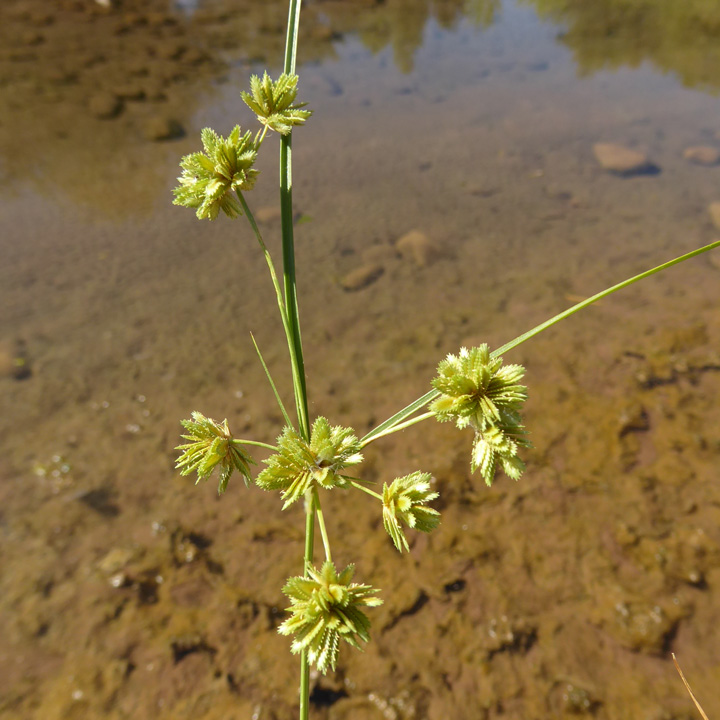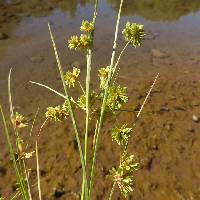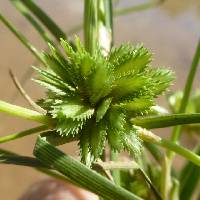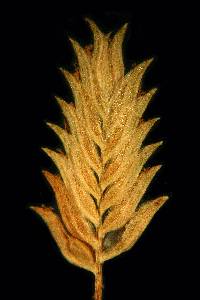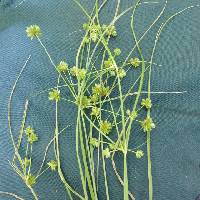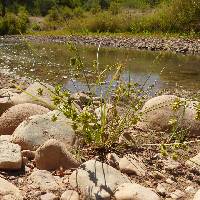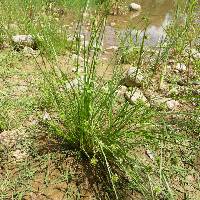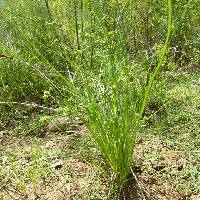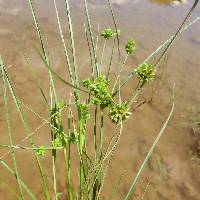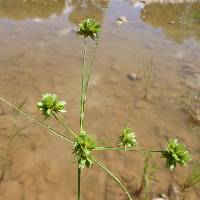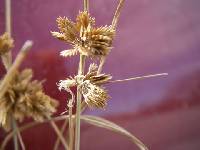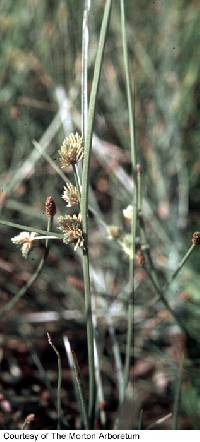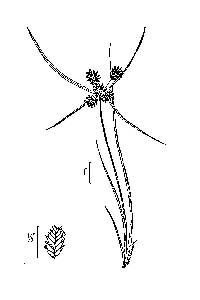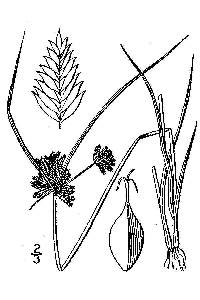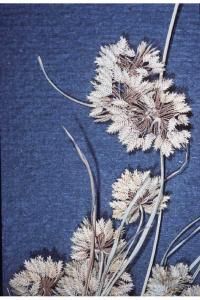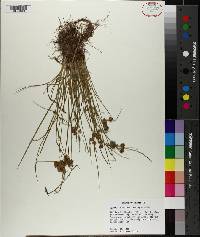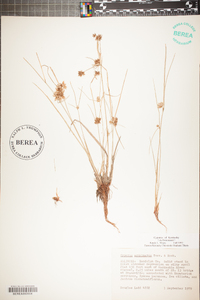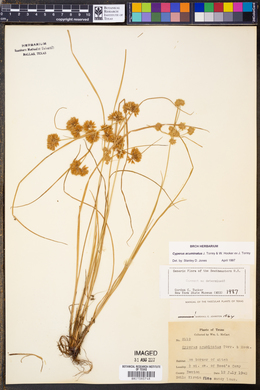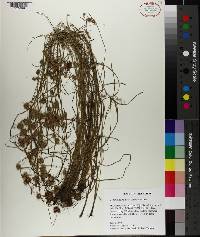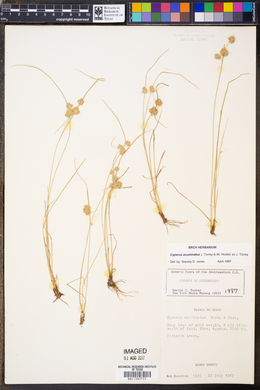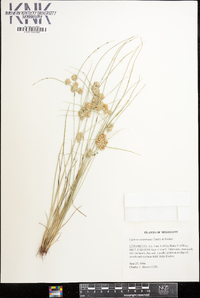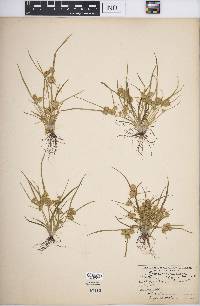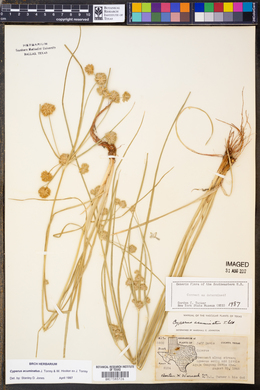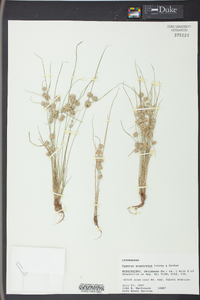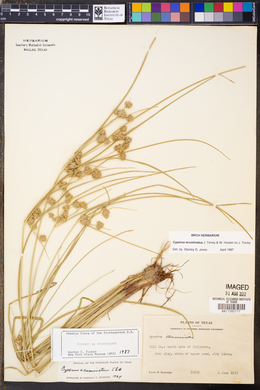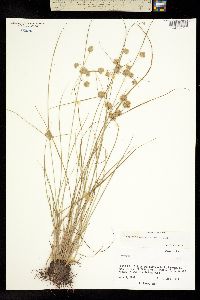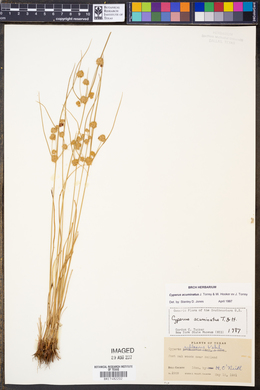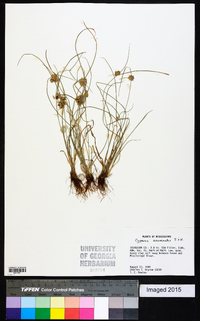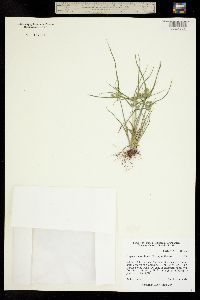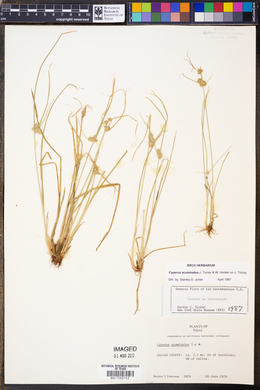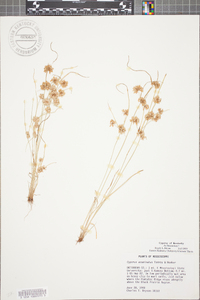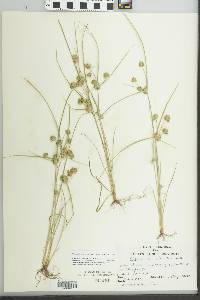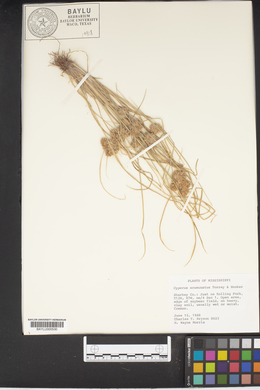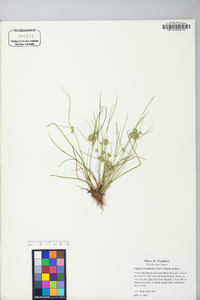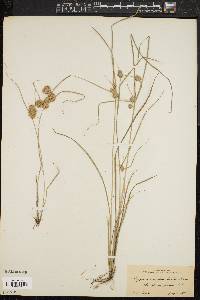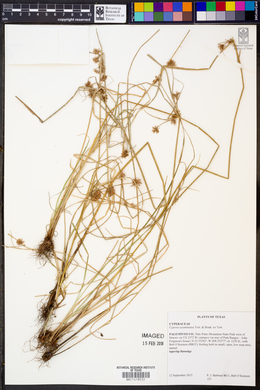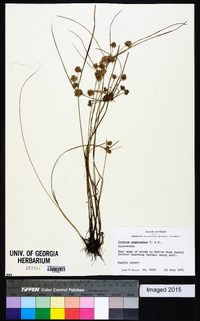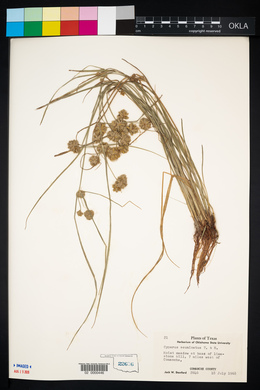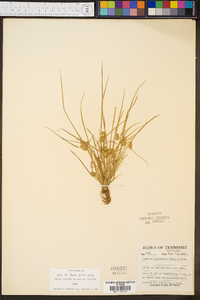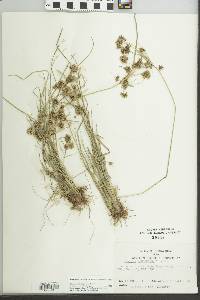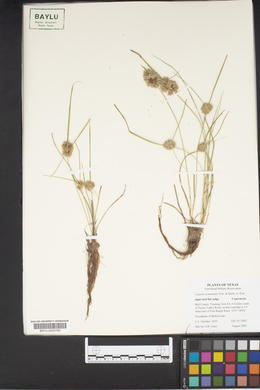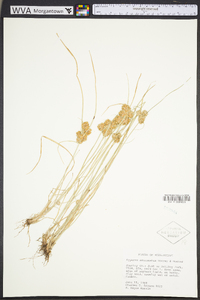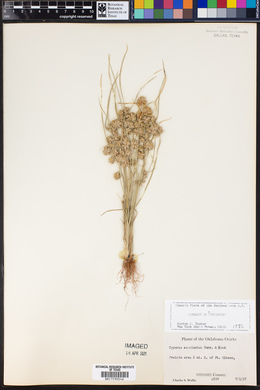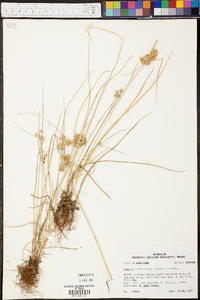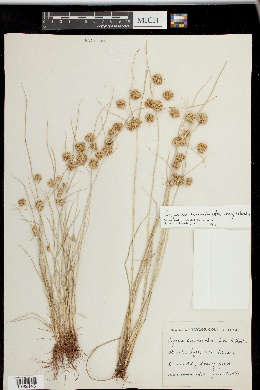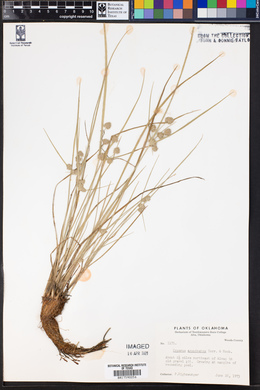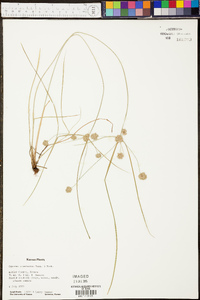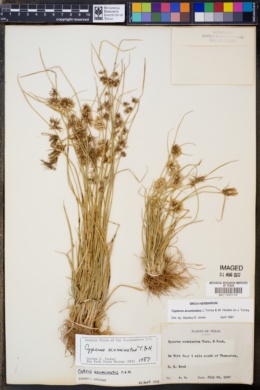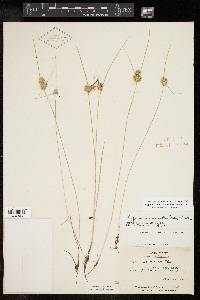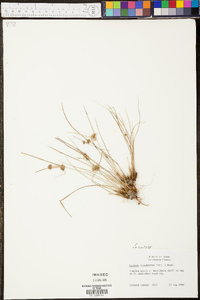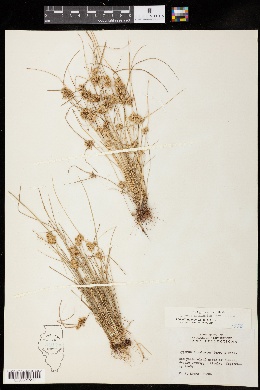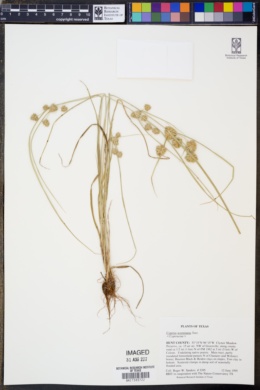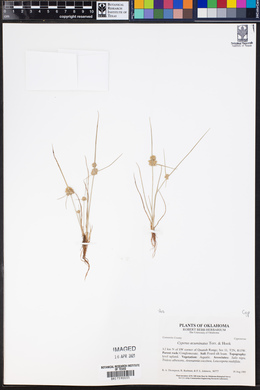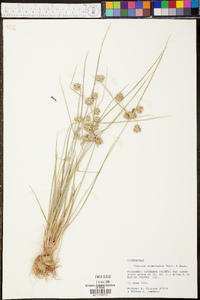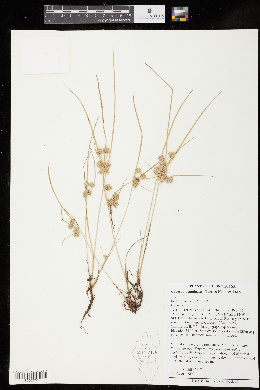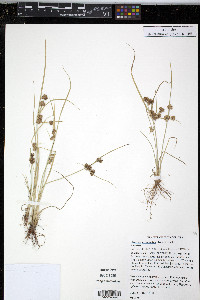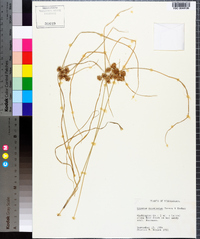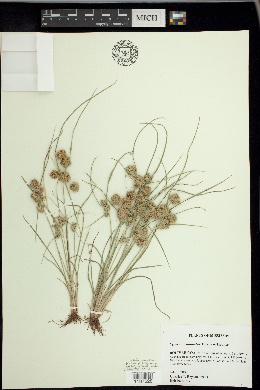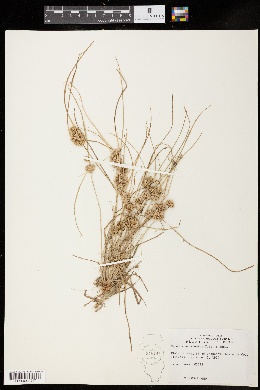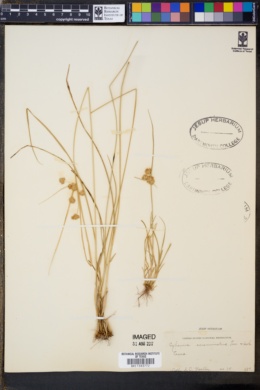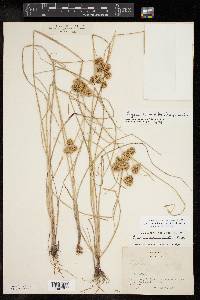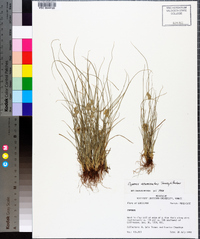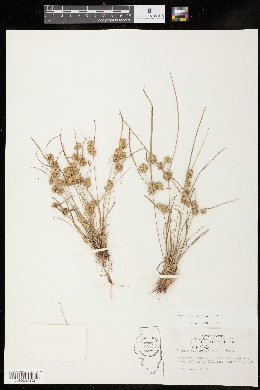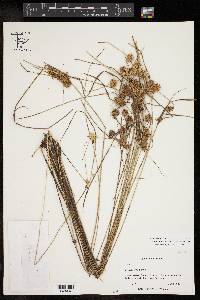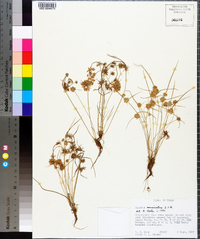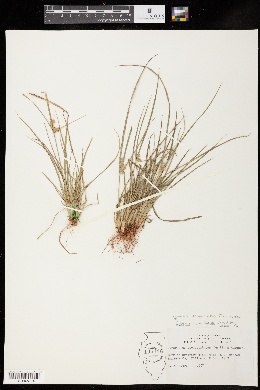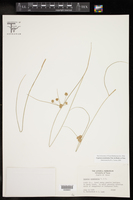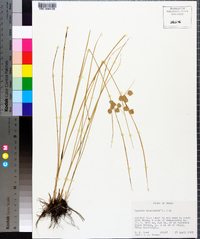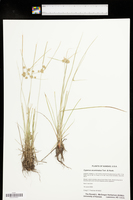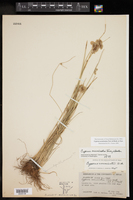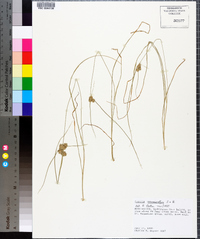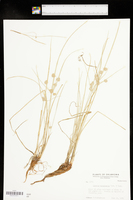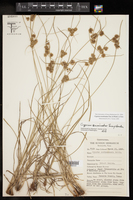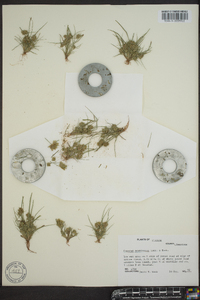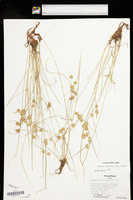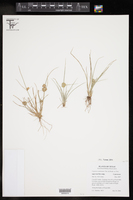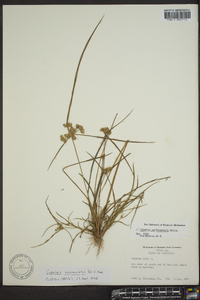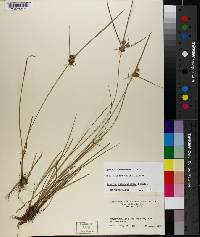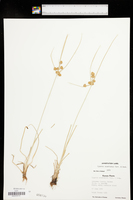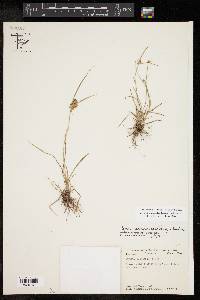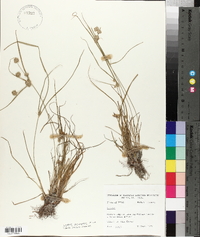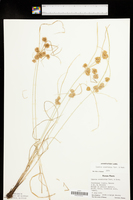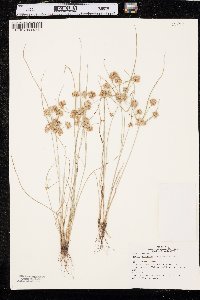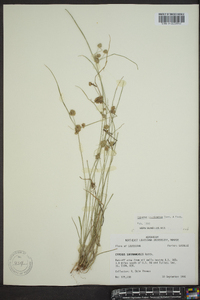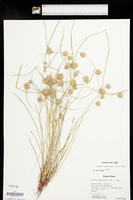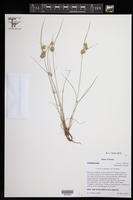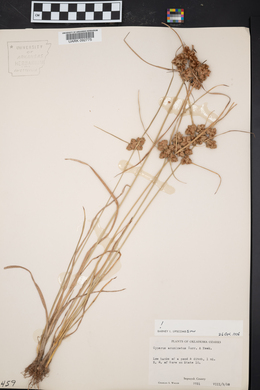Cyperus acuminatus
|
|
|
|
Family: Cyperaceae
Taper-Tip Flat Sedge, more...tapertip flatsedge, taperleaf flatsedge
[Cyperus cyrtolepis, moreCyperus rufescens var. denticarinatus] |
Herbs, annual, cespitose. Culms roundly trigonous, (10-)20-30(-45) cm × 0.4-1.2 mm, distal 1/2 glabrous or infrequently scabridulous. Leaves 2-6(-8), V-shaped or flat, 8-12(-16) cm × 1-2(-4) mm. Inflorescences: heads hemispheric, 7-12(-15) mm diam.; rays 1-3(-5), 0.5-2 cm; bracts 3-6, longest erect to ascending, flat to V-shaped, (1.5-)3-12(-25) cm × 1-2.5(-3.5) mm. Spikelets (15-)25-50(-75), ovoid, compressed, 4-7 × 2-3 mm; floral scales 8-20(-35), laterally yellowish, yellowish green, or light reddish brown, medially light brown or greenish brown, 2-keeled, subtly 1-ribbed, ovate-lanceolate, 1-2 × 1-1.4 mm, apex acute, mucronate, straight to excurved, glabrous or sparsely scabridulous. Flowers: stamen 1; anthers 0.5 mm; styles 0.8-1.1 mm; stigmas 0.5 mm. Achenes brown, stipitate, broadly ellipsoid, abruptly contracted to base, 0.8-1.1 × 0.3-0.4 mm, stipe 0.1 mm, apex acute, tapering to slender beak formed of persistent style base, surfaces papillose. Fruiting summer-fall (Jul-Oct). Wet, often sandy shores and damp, disturbed soils; 0-1500 m; Ala., Ariz., Ark., Calif., Colo., Ill., Ind., Iowa, Kans., Ky., La., Mich., Minn., Mo., Mont., Nebr., N.H. (introduced-), N.Y. (introduced-), N.C., N.Dak., Ohio, Okla., Oreg., Pa. (introduced-), S.Dak., Tenn., Tex., Utah, Va., Wash., Wyo.; Mexico (Coahuila, Tamaulipas). Annual herb with rhizomes and runners, tufted 10 - 40 cm tall Leaves: two to six, basal, alternate, 8 - 12 cm long, 1 - 2 mm wide, flat or V-shaped in cross-section, linear, parallel-veined, keeled beneath, with a sheathing base that encloses the stem. Inflorescence: consisting of terminal spikelet heads, subtended by spirally arranged leafy bracts. Bracts three to six, upright to ascending, unequal, 3 - 12 cm long, 1 - 2.5 mm wide, all or some much longer than the inflorescence, flat or V-shaped in cross-section. Rays (branches of inflorescence) one to three, 0.5 - 2 cm long. Spikelet heads 7 - 15 mm in diameter, hemispheric, dense, consisting of 25 to 50 spikelets. Flowers: minute, in the axil of a floral scale, lacking sepals and petals. Stamen one. Anthers about 0.5 mm long. Pistil one. Style two- or three-cleft. Fruit: a one-seeded achene, short-stalked, brown, about 1 mm long and 0.5 mm wide, broadly ellipsoid with a pointed apex and slender beak, contracted at base, bumpy. Seed with a thin, non-adherent wall. Culm: 10 - 40 cm long, 0.5 - 1 mm wide, roundly triangular in cross-section, solid. Spikelets: 3 - 7 mm long, 2 - 3 mm wide, strongly flattened, egg-shaped, subtended by two small bracts, with eight to twenty floral scales. Scales two-ranked, 1 - 2 mm long, 1 - 1.5 mm wide, egg- lance-shaped with a recurved-pointed apex, two-keeled basally, three-ribbed, lowest one empty. Similar species: No information at this time. Flowering: August to mid-September Habitat and ecology: Rare in the Chicago Region. Found in ditches, mud flats, and other wet places. Occurence in the Chicago region: native Etymology: Cyperus is the ancient Greek word for sedge. Acuminatus means "tapering into a long point." Author: The Morton Arboretum Tufted annual 0.5-4 dm; lvs few, all near the base, slender and ±elongate, 1-2(-3) mm wide; invol bracts 3-6, unequal, elongate, some or all much surpassing the infl;
spikelets 3-7 mm, strongly flattened, 8-20(-40)-fld, borne in very dense, globose clusters on very short axes; scales 1.3-2 mm, ovate, bicarinate basally, strongly 3-nerved, otherwise subhyaline and cellular-reticulate, shortly recurved-acuminate at the tip; rachilla persistent, wingless; stamen 1; anthers 0.5-0.7 mm; achenes rather broadly trigonous, 0.6-1 mm. Streambanks and other wet, low places, tolerant of alkali; Ill. to N.D., Mo., Tex., and n. Mex., e. occasionally to O., Ky. and w. N.C., and w. irregularly to the Pacific. Gleason, Henry A. & Cronquist, Arthur J. 1991. Manual of vascular plants of northeastern United States and adjacent Canada. lxxv + 910 pp. ©The New York Botanical Garden. All rights reserved. Used by permission. From Flora of Indiana (1940) by Charles C. Deam I have found this species only in Crawford and Greene Counties. I am not able to locate my Crawford County specimen now. Friesner also found it in Greene County. Geise cites a specimen from near Chesterton, Porter County, collected by E. T. Harper in 1888. This specimen is deposited in the herbarium of the University of Wisconsin. I have seen it and the determination is correct. |
|
|
|

